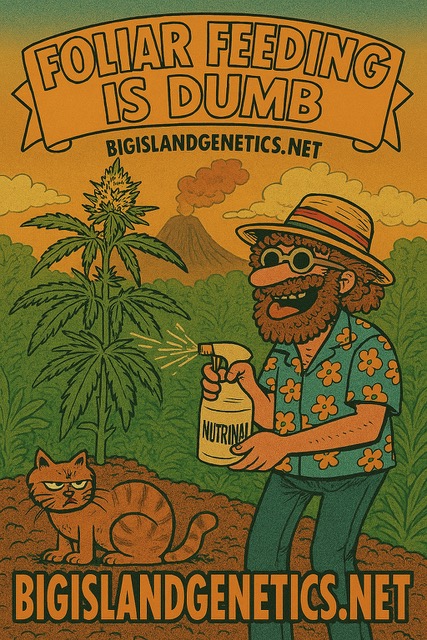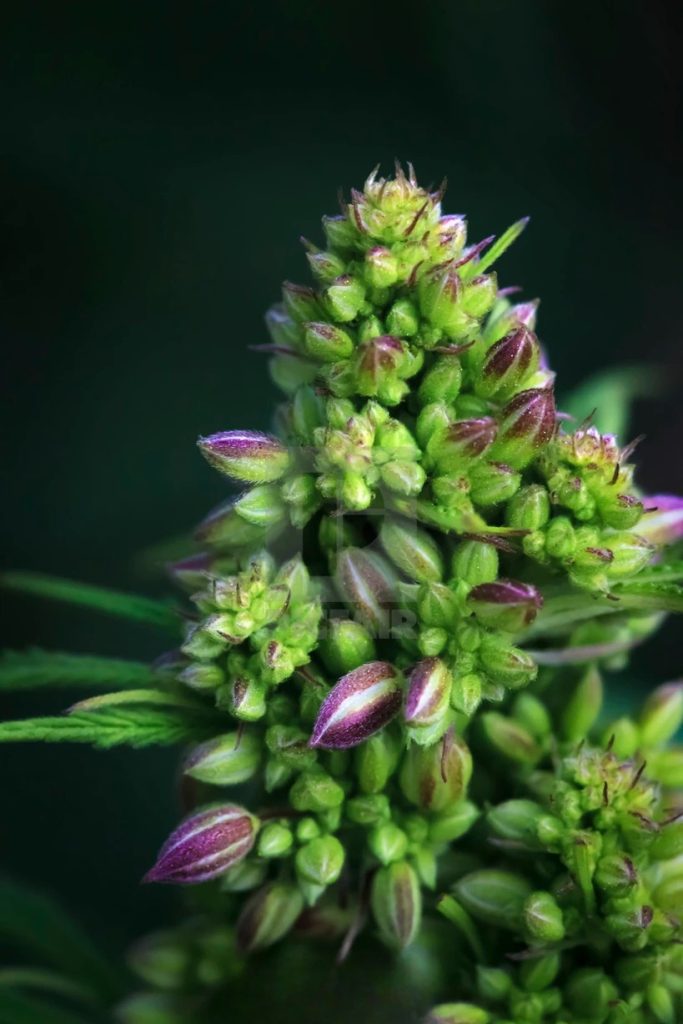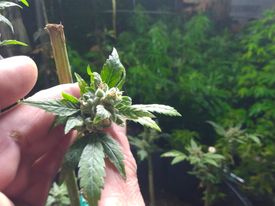
Everything You’ve Been Told About “Indica vs. Sativa” Is Outdated
Indian hemp’s world tour, Afghanica’s resin engines, Ruderalis as a high-latitude sativa adaptation — and why Hawaiʻi made magic
Opening note to readers
What follows isn’t “my discovery.” I’m passing along what careful botanists, chemists, and geneticists have pieced together — and what growers have seen in the field for decades. My job here is to stitch the story together cleanly so anyone (and especially the experts) can check the receipts. Let’s upgrade the conversation.
1) How we got here: from grower shorthand to systematics
In the late 1970s and early 1980s, the scene needed a common language. Robert C. Clarke’s Marijuana Botany gave breeders and growers practical bins — sativa / indica / ruderalis — that were never intended to be the final word in taxonomy, but they organized breeding programs and cultural vocabulary for a generation. Clarke did foundational work documenting morphology, propagation, and breeding at a time when careful documentation was rare. (Clarke 1981).
As more data arrived, the tidy bins started to leak. K. W. Hillig (2004–2005) applied chemotaxonomy (cannabinoid/terpenoid profiles) alongside genetics and morphology, finding coherent biotypes and supporting a two-species concept within cultivated cannabis; his work also helped formalize the familiar NLD/BLD (narrow-leaf drug / broad-leaf drug) ideas many breeders use. (Hillig 2004–2005).
In the genomics era, Sawler et al. (2015) genotyped cannabis at thousands of SNPs and reached a blunt conclusion: hemp vs. drug types are clearly distinct, but retail ancestry claims (how “indica” or “sativa” a strain is supposed to be) only moderately correlate with genetics, and strain names don’t reliably reflect genotype. That’s the scientific version of “labels ≠ biology.” (Sawler et al. 2015).
By 2018, John M. McPartland reviewed cannabis systematics and emphasized a clean separation between formal taxonomy and vernacular dispensary labels. In 2020, McPartland (with Ernest Small) advanced a conservation-minded framework that explicitly recognizes Afghanica within C. sativa subsp. indica, while underscoring how decades of hybridization blur boundaries in today’s market. (McPartland 2018; McPartland 2020).
Then came the hammer: Nature Plants (Watts et al., 2021) analyzed chemistry and >100k genetic markers and found “Sativa”- and “Indica”-labelled samples are genetically indistinct at a genome-wide scale; any label signal tracked a small set of terpenes controlled by terpene-synthase gene arrays. In other words: the shelf sticker mostly reflects a few aroma genes, not two clean lineages. (Watts et al. 2021; see also CU-Boulder/Dalhousie coverage).
Bottom line of the literature: the grower shorthand was useful; the science shows why it breaks. We keep the practical insights, but we stop pretending the menu tribes are taxonomy.
2) What the plant actually is: NLD, BLD/Afghanica, and Ruderalis (correctly framed)
NLD (Narrow-Leaf Drug): The tall, lanky, “tropical” expressions many call “sativa.” Historically tied to Indian hemp radiating across South/Southeast Asia and the equatorial belt. Leaves are narrow to shed heat and water; long seasons, intense sun. (Clarke & Merlin 2013; Hillig 2005).
BLD (Broad-Leaf Drug) / C. sativa subsp. indica var. afghanica: The squat hash-plant families from Afghanistan/Hindu Kush valleys selected for resin density, thick cuticles, short internodes, and early finish — built for sieving and hand-rubbing charas. This is the resin engine modern hybrids tap when they need punch and finish. (McPartland 2020).
Ruderalis: A high-latitude, short-season sativa/NLD adaptation characterized by photoperiod independence (autoflowering). It flowers with age rather than long nights, and it’s best treated as an adaptive strategy that evolved in feral/northern populations — not a clean third “species” the way a menu implies. (Clarke & Merlin 2013; Watts et al. 2021 overview).
> Professor’s translation: Think in ecotypes and traits (NLD vigor, Afghanica resin, Ruderalis autoflowering), not in cartoon tribes.
3) Why effects don’t map to leaf shape (and why “blind taste tests” fail)
Panels of heavy hitters have famously failed to sort jars into “Indica” or “Sativa” when blinded — and the literature explains why. Effects come from chemistry × environment × maturity, not leaflet width: major/minor cannabinoids (THC, THCV as an energizing/appetite-suppressing signal in some lines), terpenes (aroma, absorption dynamics), lesser-tracked esters and flavonoids, plus growing conditions (light intensity, altitude, soils) and harvest/cure. Genomic/chemometric papers show the menu label tells you very little about that ensemble. (Watts et al. 2021; CU-Boulder 2022; Jin et al. 2021).
Consumer tip (grown-up version): If you say “terpene profile,” name the terpenes and ratios or keep it sensory and honest: how it smells, how it tastes, how it lingers, how it hits. The molecules do the talking — the sticker doesn’t. (Watts et al. 2021).
4) “Indica” literally means “of India” — and Indian hemp went everywhere
Words matter. Indica means “from India.” Historical diffusion of Indian hemp — by trade routes and colonial movement — carried drug-type genetics across the tropics, where they mixed with local cultivated and feral hemp to produce regional landraces (“Thai,” “Vietnamese,” “Colombian,” “Mexican,” etc.). The Founders knew “India hemp” as a crop: George Washington explicitly wrote about India hemp in 1794, instructing his farm manager to save the seed and make the most of it if valuable. (Washington to William Pearce, Aug. 17, 1794; and Feb. 9, 1794).
(Note for accuracy: Monticello and Mount Vernon have repeatedly debunked viral quotes and myths about Washington/Jefferson “smoking weed.” Use the real documents; skip the memes.)
5) Afghanica’s place in the story (and on your palate)
While Indian hemp spread widely, Afghanica remained relatively localized, fine-tuned for hashish production: dense trichomes, compact flowers, protective leaf surface chemistry. When breeders blend NLD (tropical vigor, soaring aromas) with Afghanica (resin mass, finish), you get the modern hybrid engines that dominate shelves. Systematically, Afghanica sits within C. sativa subsp. indica as a recognizable resin lineage worth naming — not just hand-waving as “indica.” (McPartland 2018; McPartland 2020).
6) Why Hawaiʻi punched way above its weight 🌋🌴
Hawaiʻi is where tropical NLD (the so-called “sativa” side) collided with Afghanica during the 1960s–1980s era of global backpacking and seed swapping. Put NLD vigor and Afghanica resin under intense tropical sun, maritime humidity, and volcanic soils, then give it a year-round grow window — and you naturally select for aromatic, powerful, weather-savvy hybrids. That’s the deep reason behind the legend of “original Hawaiian” types (Maui, Kona, and cousins), even as names drifted and genetics shuffled through time. (Clarke & Merlin 2013; McPartland 2020).
> Or, in the local tongue of the garden: Hawaiʻi took Indian-hemp sparkle, crossed it with Afghanica’s resin engines, and let the Pacific sun sing harmony. It’s not hype — it’s horticulture.
7) Where the terminology is heading (useful words you can defend)
Ecotype & elevation: Highland vs. Lowland (short-season radiation, leaf breadth vs. long-season narrow-leaf). (Clarke & Merlin 2013; Hillig 2005).
Trait buckets: NLD (tropical narrow-leaf), Afghanica/BLD (hash-plant resin), Ruderalis (autoflowering). (McPartland 2018, 2020; Clarke & Merlin 2013).
Chemovars over labels: classify by dominant cannabinoids/terpenes when data exist; otherwise, use honest sensory language. (Watts et al. 2021; Jin et al. 2021).
8) Ruderalis, locked correctly
To be explicit, and to correct a common slip: Ruderalis is best framed as an independent sativa/NLD high-latitude adaptation defined by autoflowering (age-triggered flowering rather than photoperiod). It contributed a priceless trait to modern breeding but isn’t a third “species” in the retail sense. (Clarke & Merlin 2013; Watts et al. 2021).
9) How to talk like a grown-up about weed (Professor’s rules)
1. Ditch the bedtime story: “Indica for sleep, Sativa for energy” is marketing. If you claim “terpene profile,” then name the terpenes and percentages — or keep it sensory: smell, taste, linger, mouthfeel, effect. (Watts et al. 2021; CU-Boulder 2022).
2. Ask better questions: What’s the dominant cannabinoid set (any THCV in there)? Which terpenes? How was it grown, harvested, and cured? (Jin et al. 2021).
3. Like what you like — for the reason you like it. Labels aren’t your boss. Your senses (and data) are.
> “Like what you like, for the reason you like it.” — Professor Potgrower
Acknowledgments
Respect to Clarke for giving the culture a shared language, to Hillig for careful biotype and chemotype mapping, and to McPartland & Small and the genomics teams for showing, with receipts, why our shop labels aren’t taxonomy. This is how a field grows up.
References (selected)
Clarke, R. C. (1981). Marijuana Botany: An Advanced Study. And/Or Press.
Clarke, R. C., & Merlin, M. (2013). Cannabis: Evolution and Ethnobotany. University of California Press.
Hillig, K. W. (2004/2005). Chemotaxonomic analyses defining cannabis biotypes and THC:CBD chemotypes. (See PubMed summary).
Sawler, J., Stout, J. M., Gardner, K. M., et al. (2015). The Genetic Structure of Marijuana and Hemp. PLOS ONE, 10(8), e0133292. Moderate correlation between reported indica/sativa ancestry and genotype; names often ≠ genotype.
McPartland, J. M. (2018). Cannabis Systematics at the Levels of Family, Genus, and Species. Cannabis and Cannabinoid Research. Clarifies taxonomy vs. vernacular labels.
McPartland, J. M. (2020). A classification of endangered high-THC cannabis (PhytoKeys). Conservation lens; explicit treatment of var. afghanica.
Watts, S., et al. (2021). Cannabis labelling is associated with variation in a small number of terpenes… Nature Plants. Labels are genetically indistinct; small terpene gene arrays drive what signal exists.
Jin, D., et al. (2021). Identification of Chemotypic Markers… Frontiers in Plant Science. Chemotaxonomic separation is mixed; THC/CBD alone isn’t enough.
Washington, G. (1794). Letters referencing India hemp and seed saving. Founders Online.
Monticello/Mount Vernon. Myth-busting pages on Washington/Jefferson hemp claims.
Final word from the islands
The Indica–Sativa narrative was a decent first draft. The grown-up version talks NLD vs. Afghanica traits, acknowledges Ruderalis as a high-latitude sativa adaptation, and focuses on chemistry and craft. Hawaiʻi’s role in this story is simple: take Indian-hemp vigor, blend with Afghanica resin, grow under Pacific sun — and you get flower that sings. That’s the lineage. That’s the lesson. And that’s why we grow.
— Professor Potgrower, Big Island Genetics 🌺🌋






